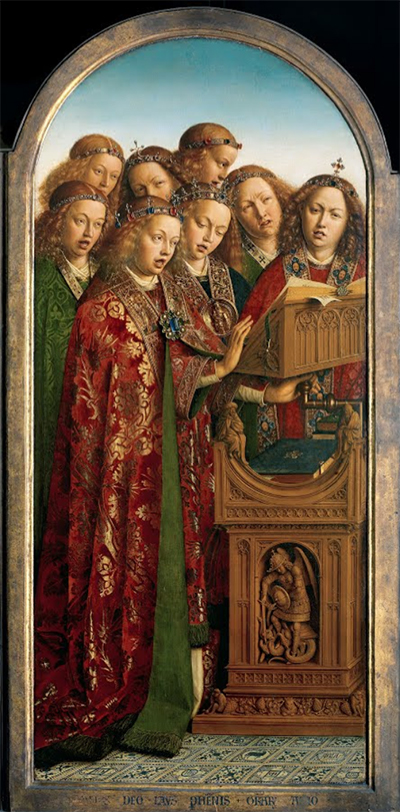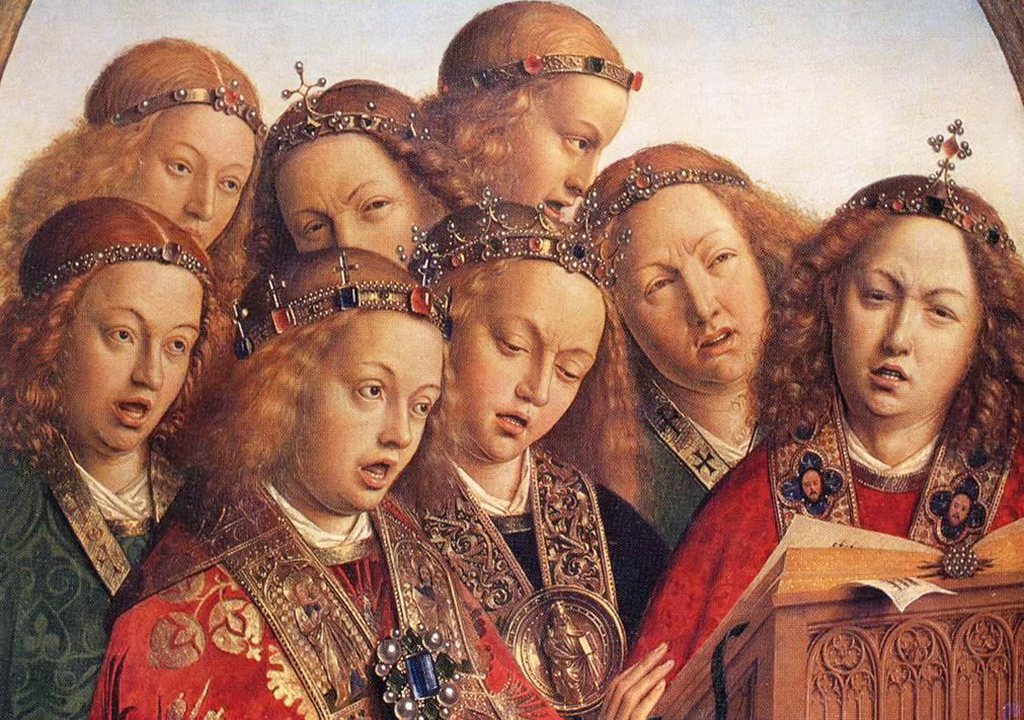This panel is curved at the top in order to fit into its similarly shaped frame. Singing Angels completes a single element to the overall project which became known as the Ghent Altarpiece, which is an intricate triptych and one of the highlights of the Northern Renaissance.
Those interested in enjoying some of the detail incorporated by Jan van Eych, in collaboration with some members of his workshop, would be interested in the cropped photograph featured at the bottom of this page. Detail and realism was key attributes of this artist, be it in tiled flooring with carefully crafted patterns, intricate cityscapes capturing medieval architecture or indeed the stunning portraiture for which perhaps he is the most famous. The combination of these different elements together in the same scene left viewers of his work in amazement and ensured that he was never short of commission requests. At the time most of the great European artists could not be financially comfortable without the blessing of a number of wealthy, connected patrons and so Van Eyck's diplomacy skills came in handy as he started to build his career and his artistic reputation.
The scene itself is fairly simple to describe, but laden with detail from top to bottom. There is a group of young women huddled together in a religious setting, happily singing together. Behind them is a bright but plain sky, bringing positivity to the work but without distracting one's eyes. It also helps to saturate the women in light that allows us to better see their decorative outfits as well as the finely crafted furniture around which they have gathered. Yellows, reds and greens would become common palette choices for Van Eyck over a number of years, partly because of his liking for them, and partly because they were at times easier to source than other choices. The most impressive detail in this painting would have to be the embroidered pattern on the woman nearest us, as well as the tiled floor below their feet. The artist leaves lettering on the frame at the bottom which is another of his trademark behaviours.
Several different dates have been attributed to the overall project, some placing it as from 1427-29, whilst others suggesting it was actually finished in 1432. There are many question marks surrounding this artist's career, but we do know that he produced the majority of the work on these painted panels, though with assistance from his workshop and brother Hubert in some cases. The level of detail delivered has meant that many have actually handled each of the different panels separately in order to give each painting the attention it deserves, rather than just referring to the project as one single entity. Within the altarpiece, Van Eyck would capture singers and musicians on either side of the piece, with these women posed as angels. There are eight in total here, and their dressing is belived to be consistent with brocade copes. The furniture specifically is a lectern and the type of singing that they were performing would have been in line with the style of the day, within Burgundian courts.





